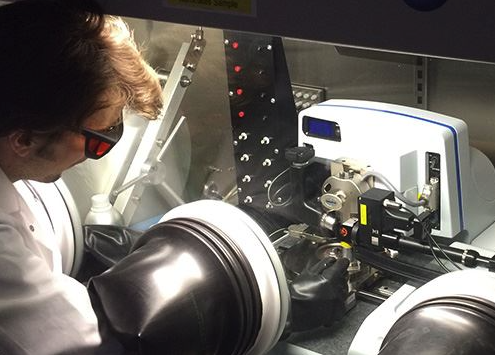Members Login

Channels
Special Offers & Promotions
The US Army Research Laboratory in Maryland Combines Raman Spectroscopy and AFM to Characterise Electrochemical Energy Storage Materials
Renishaw, a world leader in metrology and spectroscopy technologies, reports on the use of its inVia confocal Raman microscope in conjunction with a Bruker Dimension Icon atomic force microscope (AFM) to study electrochemical energy storage materials at the US Army Research Laboratory (ARL) in Maryland, USA.
 Dr Collin Becker is a mechanical engineer at the US Army Research Laboratory (ARL) in Maryland, USA. His group studies materials for advanced lithium ion batteries and future-generation energy storage systems, such as sodium ion, magnesium ion and solid-state batteries. His research on lithium ion batteries focuses on developing high capacity anode materials to improve the overall energy density, rate of discharge and safety of electrochemical energy storage materials for electronics and vehicles. He also assists colleagues in the electrochemistry branch, characterizing materials such as novel cathode materials and solid-state electrolytes.
Dr Collin Becker is a mechanical engineer at the US Army Research Laboratory (ARL) in Maryland, USA. His group studies materials for advanced lithium ion batteries and future-generation energy storage systems, such as sodium ion, magnesium ion and solid-state batteries. His research on lithium ion batteries focuses on developing high capacity anode materials to improve the overall energy density, rate of discharge and safety of electrochemical energy storage materials for electronics and vehicles. He also assists colleagues in the electrochemistry branch, characterizing materials such as novel cathode materials and solid-state electrolytes.
Dr Becker investigates in situ changes in materials during battery charge and discharge with his Renishaw/Bruker combined Raman/AFM. This system—unlike scanning electron microscopes (SEM) and x-ray photoelectron spectrometers (XPS)—does not require samples to be in high vacuum. He can therefore use the Renishaw/Bruker system to study cells with standard electrolytes, in an inert environment provided by a glovebox. This provides the most realistic picture of the chemical and mechanical events taking place during battery cycling. He can also use the system to analyse other air and moisture sensitive samples.
Speaking about the key advantage of using the Renishaw inVia system, Dr Becker said “The capability to use systems like the inVia in an argon-filled glovebox is critical for lithium ion battery materials since they are typically air and moisture sensitive. The ability to do mapping experiments and still be able to have the system coupled with the electrochemical cell used for in situ AFM is very important.”
Media Partners


